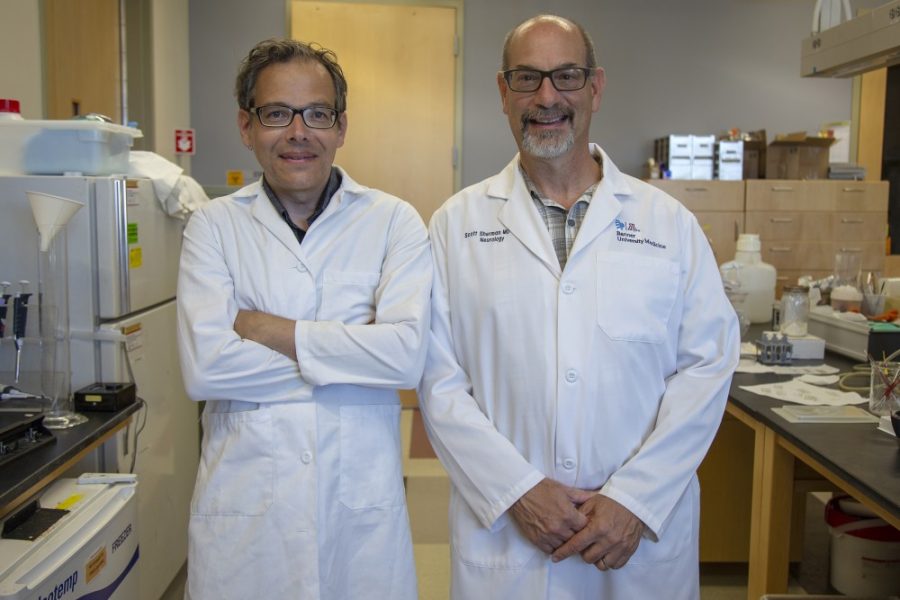Two researchers at the University of Arizona College of Medicine – Tucson recently received a three-year, $750,000 grant from the Arizona Biomedical Research Commission to study how ketamine might be used to improve the lives of patients with Parkinson’s disease.
Dr. Scott Sherman, a neurologist at the College of Medicine, and Torsten Falk, a neuroscientist in the UA Department of Neurology, will be moving from laboratory investigations to clinical trials in the next year.
Sherman said, as one of the biggest risk factors for getting Parkinson’s disease is age, Arizona is an ideal place to carry out this research.
RELATED: Pharmacy kiosks make filling prescriptions convenient
“Parkinson’s disease is one of the most common neurodegenerative disorders in the United States, and it’s particularly relevant to Arizona because, despite having a lot of young people at the college here, we also have a significant retirement community,” Sherman said.
Parkinson’s disease is a neurodegenerative disorder presenting with damage to a particular set of brain cells that make dopamine, a chemical in the brain important for several functions, including movement, Sherman said. For that reason, the most common symptoms people see with Parkinson’s disease are slowness of movement, tremors, stiffness and problems with balance or walking.
Sherman said 50 years ago a drug called Levodopa was discovered to treat Parkinson’s disease.
“When people first discovered Levodopa they thought that they really had a cure for Parkinson’s disease, but now we know that that’s not the case,” Sherman said. “For one thing, the underlying cell loss continues, even though we treat that, but even more important for the patients in a short-term sense is that the Levodopa treatment comes along with some pretty significant side effects.”
Almost all patients with Parkinson’s disease will need that treatment, Sherman said. Helping patients tolerate treatment better would be a big step forward in terms of quality of life.
“One of the big problems with Levodopa is that, after a few years, patients almost get too much of a good thing,” Sherman said. “While it helps them make movements easier, they develop involuntary movements.”
Those involuntary movements, called dyskinesia, occur after 5-10 years of treatment and can range in severity from small tics to ones so large that patients have to stop what they’re doing. Sherman said some patients actually need to have neurosurgery to correct the problem.
Sherman and Falk are looking for a medical treatment for that side effect, and that’s where ketamine comes in.
Years ago, during a different trial that was testing ketamine for pain relief, Sherman and Falk noticed patients who also had Parkinson’s disease experienced a reduction in dyskinesia. They decided to investigate this further.
This pre-trial work was completed with philanthropically raised funds, and the rodent models used showed reduction in the dyskinesia, both when given ketamine preemptively (before developing dyskinesia) and after developing dyskinesia, Falk said. The effects of a single treatment also lasted for weeks.
Falk said the majority of the preclinical work on ketamine in his lab was conducted by graduate student Mitchell J. Bartlett from the Medical Pharmacology Graduate Program.
Now, they are designing the clinical trials. Falk said the first trial in the fall will center on determining an optimal dose in the patients. Controlled trials will then follow in the next two years.
“The thing that we are both most excited about is safety is not going to be an issue, since ketamine has been used as an anesthetic in much higher doses for over 50 years,” Falk said. “So, we do not expect any problems with toxicity because many, many people have been treated with it in much higher doses.”
Sherman said, if all goes well, he hopes to make the study a crossover study, so that the group of patients that originally get the placebo drug will also get the chance to receive the ketamine treatment.
“I always think that it’s better if subjects are all able to get the test article, if possible,” Sherman said. “… We can make it scientifically valid but we can also pay attention to fairness to research participants.”
Sherman said the most common side effect of ketamine, an out-of-body experience, only occurs while patients are actually getting the infusion, but their trial will use dosages lower than those that typically trigger that response.
The point of this research is to improve quality of life for the percentage of patients taking Levodopa that develop dyskinesia, according to Falk.
RELATED: High school students learn importance of environmental health
“Just shifting the good time that someone could have with Levodopa just five to ten years would be a huge impact,” Falk said. “Most people are in their 60s already when they receive it. It takes maybe five to eight years for these side effects to develop. By that time they’re in their 70s, so, if you can extend that, it would make a big difference.”
Sherman said, since ketamine works differently than any other drug on the market right now, there is also value in figuring out how ketamine works, as it could open up the field to developing more drugs similar to ketamine but perhaps with fewer side effects or greater potency.
“There’s a general benefit to just conducting good scientific research here in Arizona in this population,” Sherman said. “It gives people hope that we’re working on the condition. This is an important one, because more and more people will be subject to these conditions as our population expands and ages.”
Follow Marissa Heffernan on Twitter















